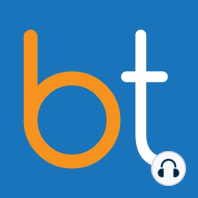38 min listen

Ep. 212 New Tools to Treat Severe Distal Femoropopliteal Disease with Dr. John Rundback
Ep. 212 New Tools to Treat Severe Distal Femoropopliteal Disease with Dr. John Rundback
ratings:
Length:
36 minutes
Released:
May 30, 2022
Format:
Podcast episode
Description
In this episode, host Dr. Sabeen Dhand interviews Dr. John Rundback, interventional radiologist, about distal femoropopliteal disease, including the unique pathophysiology of this area, which stents work best at the adductor canal and the trifurcation, and tips for early operators.
---
CHECK OUT OUR SPONSOR
Veryan BioMimics 3D® Vascular Stent System
https://www.veryanmed.com/usa/products/biomimics-3d-vascular-stent-system/
---
SHOW NOTES
In this episode, host Dr. Sabeen Dhand interviews Dr. John Rundback, interventional radiologist, about distal femoropopliteal disease, including the unique pathophysiology of this area, which stents work best at the adductor canal and the trifurcation, and tips for early operators.
We begin by discussing peripheral arterial disease (PAD) pathophysiology, specifically in the challenging areas around the adductor canal (Hunter’s canal). Dr. Rundback describes how the femoral artery has twists and turns around this area and that it can experience compressive forces up to 15-20% during motions such as flexion of the knee. Due to this being the most dynamic location of the femoral artery, this is often where plaque rupture will happen, resulting in critical limb ischemia (CLI) and requiring urgent intervention.
The two discuss how traditional rigid stents do not work well in this area due to the dynamic nature of the region and the fact that the artery is tortuous and can cause rigid stents to fracture or cause intimal hyperplasia due to turbulent flow. Drug coated balloon (DCB) angioplasty generally does not work for this region due to poor durability. They discuss the utility of the Tack device, a scaffold with minimal metal which is better suited for focal dissections. Dr. Rundback emphasizes the importance of intravascular ultrasound (IVUS) during all distal femoropopliteal cases due to the complexity of the region and patient-to-patient variation. He uses IVUS to choose which device and what size to use because measuring on angiography is not accurate in these cases.
Finally, they discuss the Supera and BioMimics stents, including the indications, benefits, and ease of deployment of each. Dr. Rundback says that Supera, a woven nitinol stent, gives it the benefit of thermal memory. The difficulty with this stent is the need for aggressive vessel preparation and plaque modification, generally requiring lengthy angioplasty and possibly atherectomy. The BioMimics stent can rotate, curve, and shorten, which is optimal for this region to maintain swirling or helical blood flow rather than causing turbulent flow. The BioMimics stent is also very easy to deploy, and Dr. Rundback generally chooses this stent in locations where he can’t adequately prep the vessel.
---
RESOURCES
BioMimics 3D stent:
https://www.veryanmed.com/international/products/biomimics-3d-vascular-stent-system/
Supera™ Stent:
https://www.cardiovascular.abbott/int/en/hcp/products/peripheral-intervention/supera-stent-system/overview.html
Tack device:
https://www.usa.philips.com/healthcare/product/HCIGTDTCKESYSTM/tack-endovascular-system-dissection-repair-device
---
CHECK OUT OUR SPONSOR
Veryan BioMimics 3D® Vascular Stent System
https://www.veryanmed.com/usa/products/biomimics-3d-vascular-stent-system/
---
SHOW NOTES
In this episode, host Dr. Sabeen Dhand interviews Dr. John Rundback, interventional radiologist, about distal femoropopliteal disease, including the unique pathophysiology of this area, which stents work best at the adductor canal and the trifurcation, and tips for early operators.
We begin by discussing peripheral arterial disease (PAD) pathophysiology, specifically in the challenging areas around the adductor canal (Hunter’s canal). Dr. Rundback describes how the femoral artery has twists and turns around this area and that it can experience compressive forces up to 15-20% during motions such as flexion of the knee. Due to this being the most dynamic location of the femoral artery, this is often where plaque rupture will happen, resulting in critical limb ischemia (CLI) and requiring urgent intervention.
The two discuss how traditional rigid stents do not work well in this area due to the dynamic nature of the region and the fact that the artery is tortuous and can cause rigid stents to fracture or cause intimal hyperplasia due to turbulent flow. Drug coated balloon (DCB) angioplasty generally does not work for this region due to poor durability. They discuss the utility of the Tack device, a scaffold with minimal metal which is better suited for focal dissections. Dr. Rundback emphasizes the importance of intravascular ultrasound (IVUS) during all distal femoropopliteal cases due to the complexity of the region and patient-to-patient variation. He uses IVUS to choose which device and what size to use because measuring on angiography is not accurate in these cases.
Finally, they discuss the Supera and BioMimics stents, including the indications, benefits, and ease of deployment of each. Dr. Rundback says that Supera, a woven nitinol stent, gives it the benefit of thermal memory. The difficulty with this stent is the need for aggressive vessel preparation and plaque modification, generally requiring lengthy angioplasty and possibly atherectomy. The BioMimics stent can rotate, curve, and shorten, which is optimal for this region to maintain swirling or helical blood flow rather than causing turbulent flow. The BioMimics stent is also very easy to deploy, and Dr. Rundback generally chooses this stent in locations where he can’t adequately prep the vessel.
---
RESOURCES
BioMimics 3D stent:
https://www.veryanmed.com/international/products/biomimics-3d-vascular-stent-system/
Supera™ Stent:
https://www.cardiovascular.abbott/int/en/hcp/products/peripheral-intervention/supera-stent-system/overview.html
Tack device:
https://www.usa.philips.com/healthcare/product/HCIGTDTCKESYSTM/tack-endovascular-system-dissection-repair-device
Released:
May 30, 2022
Format:
Podcast episode
Titles in the series (100)
Ep. 21 Vertebral Augmentation with Dr. Venu Vadlamudi and Dr. Kumar Madassery: Vertebral augmentation can be accomplished throug… by BackTable Vascular & Interventional